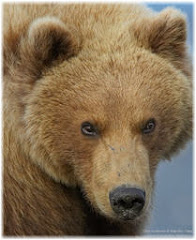The chicken is the closest living relative to the
Tyrannosaurus Rex.
Many birds kept as pets, including doves, parakeets, and
lovebirds, enjoy living in pairs for companionship.
The smallest bird egg belongs to the hummingbird and is
the size of a pea. The largest bird egg, from which the ostrich
hatches, is the size of a cantaloupe.
A bird’s eye takes up about 50 percent of its head; our
eyes take up about 5 percent of our head. To be comparable to a
bird’s eyes, our eyes would have to be the size of baseballs.
The penguin is the only bird that can swim, but not fly.
It is also the only bird that walks upright.
Owls turn their heads almost 360○ (a complete circle)
but they cannot move their eyes.
Chickens have over 200 distinct noises they make for
communicating.
When it comes to birds, the males tend to have the more
glamorous feather shape, coloration, songs, and dances. Female
birds choose their mate based on how attractive they find them!
It is estimated that one third of all bird owners turn
on a radio for their pet when they leave the house.





